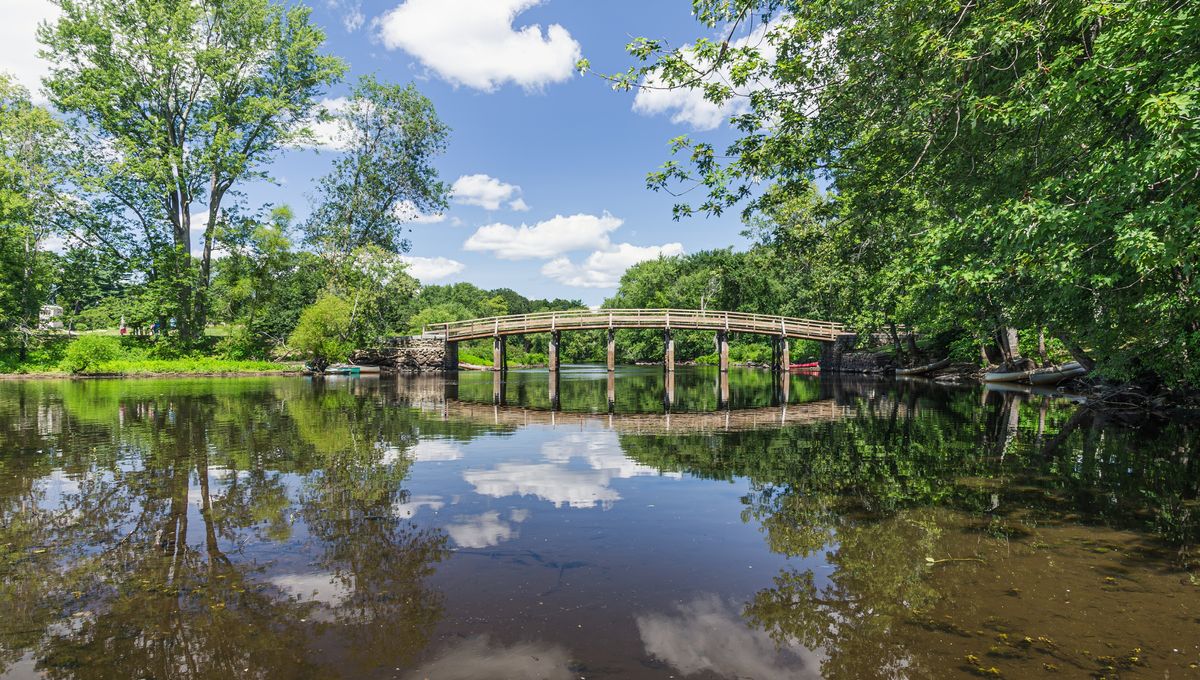
In addition to being an influential philosopher, Henry David Thoreau was a keen observer of nature, who took exceptionally detailed notes. Those notes provide a record of the New England climate in the 1850s, at a time before weather stations collected much of the data we have today. Detailed readings of the diaries have allowed Professor Robert Thorson of the University of Connecticut to reconstruct the timing of the seasons in Thoreau’s time and provide a baseline against which we can assess what has changed.
Many parts of the world track the seasons based on a rigid calendar, where winter is coming until a specific day of the year, at which point it is considered to have begun, whatever the weather. In other cultures, however, seasons are defined by natural phenomena, the timing of which may vary every year. As the world heats up, climate scientists are increasingly using these seasonal shifts to understand the consequences.
Unfortunately, detailed records usually don’t go back that far. Centuries of data are available on some events, such as the timing of the Japanese Cherry Blossom flowering, which confirm that the recent flowerings are unprecedentedly early over that time. Along with similar examples, this has provided a way to confirm climate models’ validity. However, such records are rare before to the 20th century, and therefore precious.
Thorson has found a particularly rich source in the 2 million words – many of them about the weather and its effects on the Concord River, its tributaries, and surrounds – Thoreau wrote in his post-Walden journals from 1851-1860.
“I don’t pick Thoreau for his philosophy, he’s just a damn good observer,” Thorson said in a statement. “He is meticulous, he is daily, he is yearly, and he is systematically rigorous about roaming around 50 square miles and recording it day after day after day after day.”
Thoreau recorded events such as the timing of the first snow, and when the Concord River froze solid, identifying 10 seasons he gave names like “aquatic spring” and “riparian spring”, reflecting the local climate, rather than the calendar.
Thorson has put 6,000 of Thoreau’s observations into a spreadsheet. “From these observations, we can establish the timings of discrete phenomena from the mid-19th century using simple statistics,” he said.
The timing of these events varied widely in the years Thoreau was tracking them. For example, the break-up of the ice, which formed the start of each year, occurred as early as January 1 in one year, and as late as April 7 in another.
Thorson has not yet compared the results with modern equivalents in detail, but the opportunity is there for anyone to take. “Even just answering the question of how much earlier ice breakup is occurring would take nothing more than a simple statistical analysis,” he said.
Even without such analysis, qualitative comparisons make clear the local climate has changed dramatically. Thorson notes that Thoreau once skated 100 kilometers (60 miles) up and down river in one day, and on another occasion reported ice floes 60 centimeters (2 feet) thick. “Now the river hardly freezes at all,” he said. Thoreau’s exceptionally early New Year’s Day ice breakup would now be nothing unusual, but the more typical results fall well outside the modern range. Likewise, fall now comes much later than Thoreau described.
These comparisons reveal how the changes in temperature have affected the conditions people experience, and could prove useful for anticipating similar effects elsewhere, particularly in slightly colder places whose current climate reflects Concord’s in the 1850s.
Few observers could match Thoreau’s keen eye, and many with the capability lacked the time. Nevertheless, many people with an attachment to nature kept records that could be valuable to climate scientists in other places or times, but have not been published because the authors lacked Thoreau’s fame.
As well as being a resource for climate scientists, Thorson hopes the observations will prove meaningful for those living in the Concord area, who can compare their own experiences with Thoreau’s.
“You can read dry numerical facts about how New England’s nighttime average temperatures have risen in the last 100 years, Thorson said. But when you make climate change dramatic, as with a bridge being torn apart by a spring freshet, that’s a phenomenon associated with emotion. People pay more attention. The personal narrative of a river system year after year after year – that’s what Thoreau gave us.”
The study is published open access in The Concord Saunterer.
Source Link: 170 Years On, Thoreau's Detailed Diaries Have A Lot To Teach Us About The Seasons